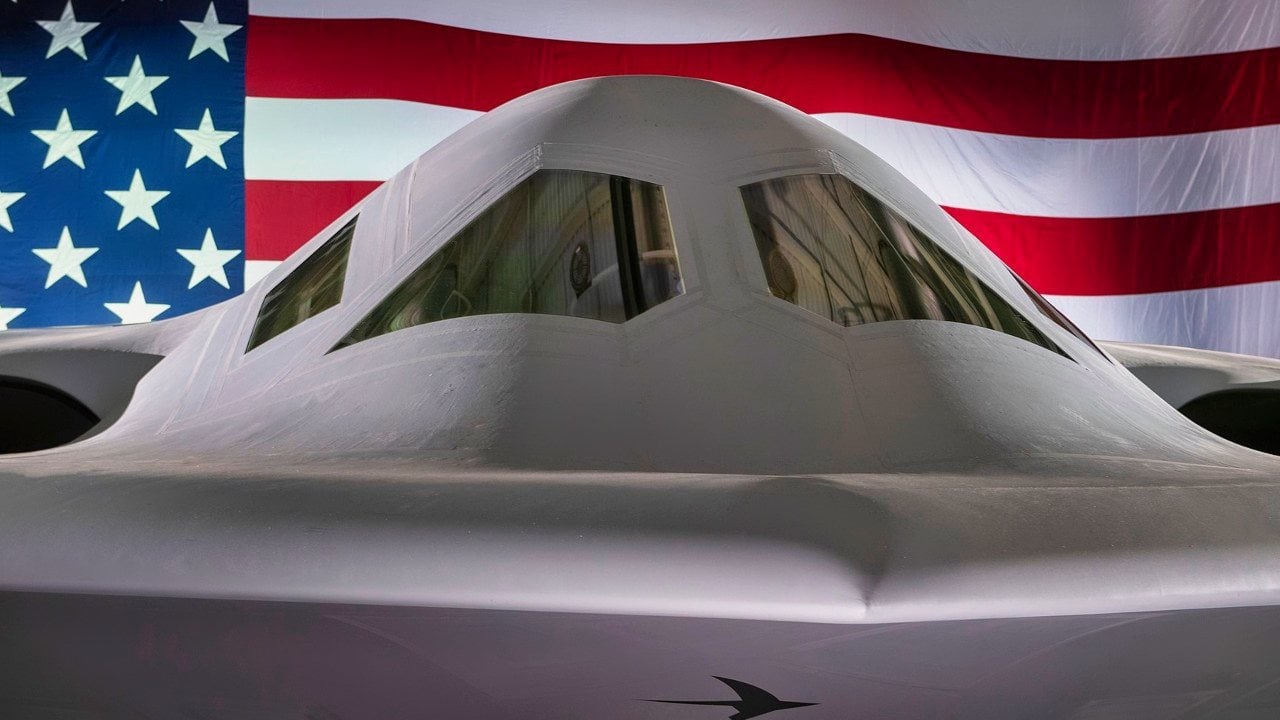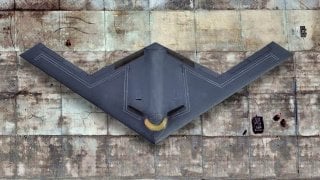The B-21 Raider Bomber Has 1 Problem That Won't Be Easy to Fix Up
The B-21 Raider, America's next-generation stealth bomber, is a technological marvel designed to replace the B-2 Spirit. However, many experts are concerned about costs, especially with U.S. budget deficits hitting nearly $2 trillion this year alone.
Summary and What You Need to Know: The B-21 Raider, America's next-generation stealth bomber, is a technological marvel designed to replace the B-2 Spirit. However, many experts are concerned about costs, especially with U.S. budget deficits hitting nearly $2 trillion this year alone.
-While its cost per unit is high, ranging between $300 million and $750 million, the program has shown financial stability, largely due to its development under the Air Force’s Rapid Capabilities Office (RCO).
-Built with "open-systems architecture," the B-21 can be upgraded throughout its lifespan, ensuring long-term relevance.
-Though expensive, its next-level stealth capability offers significant strategic value by restoring U.S. deterrence and providing long-range strike capability without relying on forward bases, making it a critical asset in a rapidly evolving global threat landscape.
The B-21 Raider: Advanced Stealth at a High Cost – Is It Justified?
America’s B-21 Raider stealth plane is a modern marvel. Designed as a replacement for the B-2 Spirit long-range stealth bomber, it is the most advanced stealth plane in the world.
But the Raider’s cost is too high. Sources peg the price per plane at anywhere between $300 million and $750 million per unit.
From the outset of the B-21 program, the Air Force has provided a range for the expected per-unit cost. This is a change from other Air Force projects, which notoriously go over budget and over time. The consistent cost-per-unit projection indicates the program may have a degree of financial predictability at a time when few defense programs do.
The reason for this is likely that the B-21 was built outside the normal Air Force acquisitions process. The Pentagon deemed the need for an updated long-range stealth bomber to be so serious that they placed the design and development of the craft through the Air Force’s Rapid Capabilities Office (RCO).
Streamlining the B-21 Development
The RCO’s involvement should ensure cost stability in the long run. Still, acquiring 100 units over several years, with all the attendant research into new materials science, propulsion, and other advanced aspects of the plane make this a daunting task.
The upside, of course, is that the advances made from this program will be spun off and enjoyed by many other programs to come.
It’s a true game-changer, The B-21 is definitely a costly program. But compared to what?
The Navy blew its budget to build new Ford-class aircraft carriers that cost a whopping $13 billion per unit. This at a time when the anti-access/area-denial (A2/AD) technology employed by America’s enemies is becoming so advanced that aircraft carriers might soon be rendered basically obsolete.
The Air Force built the B-21 Raider with what’s known as an “open-systems architecture.” In other words, the bird can be upgraded with new technologies over the course of what the Pentagon assumes will be a long lifespan (if it ever, pardon the pun, gets off the ground).

Should America’s enemies not develop reliable, cost-effective anti-stealth defenses anytime soon, the B-21 could be instrumental in restoring America’s lost deterrence. Re-establishing that deterrence would offset the Raider’s costs significantly, compared to the costs that would be incurred if a great power erupted soon.
A Long-Range Stealth Strike Capability is Needed
In this time of contested global commons, when America risks losing forward bases either in a war or due to changing political circumstances in the countries that host them, having a long-range stealth strike capability that doesn’t require bases could be key to keeping the United States in any future fight.
The B-21 is not a cheap plane, though. At a time when America’s financial house is wrecked and it seems increasingly like America’s rivals have our technological number, there are many drawbacks to the B-21. It is slow and flies low.
But its stealth might be so next-level that it makes up the difference.
Unless the Air Force is planning to completely abandon its wasteful Next-Generation Air Dominance sixth-generation warplane and build a fleet of the SR-72 “Son of Blackbird” (which marries high speed with stealth), then the B-21 might just be the way to go for the Air Force.
Author Experience and Expertise: Brandon J. Weichert
Brandon J. Weichert, a National Interest national security analyst, is a former Congressional staffer and geopolitical analyst who is a contributor at The Washington Times, the Asia Times, and The-Pipeline. He is the author of Winning Space: How America Remains a Superpower, Biohacked: China’s Race to Control Life, and The Shadow War: Iran’s Quest for Supremacy. His next book, A Disaster of Our Own Making: How the West Lost Ukraine, is due October 22 from Encounter Books. Weichert can be followed via Twitter @WeTheBrandon.
All images are Creative Commons or Shutterstock. All photos are of various submarine styles.
From the Vault
Russia Freaked Out: Why the U.S. Navy 'Unretired' the Iowa-Class Battleships
Battleship vs. Battlecruiser: Iowa-Class vs. Russia's Kirov-Class (Who Wins?)


